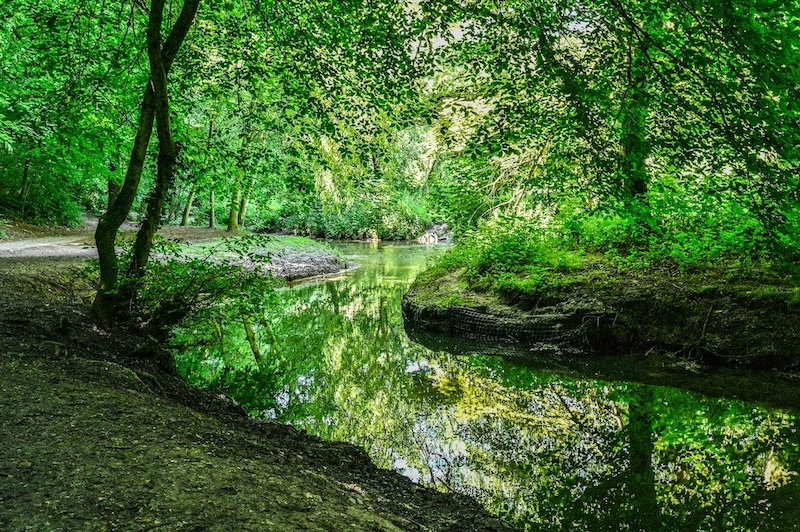Perhaps no other nation faces an environmental threat like Maldives. The rise of the oceans caused by global warming puts into question its mere existence. The world-famous luxury resorts occupy a large part of the 1,200 islands that make the archipelago and most of all are less than one meter above sea level, which is a big concern.
In 2010, a report from the World Bank warned that due to the rising sea level, approximately 200 inhabited natural islands in the archipelago could be submerged by 2100. Mohammed Waheed Hassa, who was vice president of Maldives, said: “We are one of the most vulnerable countries on earth and therefore we will have to adapt”. The concerns don’t stop there: the invasion of salt water contaminated precious sources of sweet water and the risk of unpredictable natural disasters has increased, such as the 2004 tsunami that killed more than 100 people in the territory. On other hand, the increase in coastal erosion threatened 70% of its infrastructure.
Regarding the global situation, the local population was determined to fight to preserve its existence. The idea of creating an artificial island was born and they named it Hulhumalé: The City of Hope. The island was built using millions of cubic meters of sand pumped from the seabed.
This is her story…
1. Hulhumalé: Sustainability and Hope
The Maldives, spread across the Arabian Sea, southwest of Sri Lanka and India, despite being threatened by rising sea levels due to climate change, have found a work around. Turning to a different form of geoengineering, they created the island Hulhumalé, a sustainable and futuristic city, in which they hope for a better future.
After the 2004 tsunami, a program to supervise the City of Hope was introduced. Areen Ahmed, director of business development at Housing Development Corporation (HDC), said in the meantime, that “Hulhumalé is being developed carefully in terms of climate change, architecture and communities.
Millions of cubic meters of sand were used, pumped from the ocean floor, which made it possible to place the new island, more than 2 meters above sea level. Hulhumalé should have capacity for 240 thousand people, the expansion is seen as vital to alleviating the overcrowding that currently exists in Malé, where more than 130 thousand inhabitants are huddled in just over 2.5 km².
The first phase of the Hulhumalé maritime landfill began in 1997, covered 188 hectares and was completed in 2002. The first thousand residents arrived two years later. In 2015, another 244 hectares were produced, which means that in 2019, the City of Hope already had a population of more than 50 thousand inhabitants. But Hulhumalé has more and more goals, intending to serve up to 240 thousand people in 2020.
2. How to create a sustainable city?
Hulhumalé intends to focus on sustainable urban development, aiming to obtain about one third of its energy from the sun and collecting rainwater to increase water security. The island will invest in quality housing, new job opportunities and outdoor leisure spaces, and will be three times larger than Malé. To contrast with Malé’s lack of urban development and overcrowding, Hulhumalé was designed through various green urban planning initiatives.
It is now known, through HDC officials, that buildings have a north-south solar orientation, to reduce heat and improve thermal comfort. The streets are projected to optimize the passage of the wind, reducing the dependence on air conditioning. Schools, mosques and neighborhood parks, are 100 to 200 meters away from the residential developments, suppressing the need for a car. It’s a city totally designed to think about sustainable planning initiatives at urban level.
Bike paths, trams and buses are also part of the new city, once again minimizing the use of cars. In addition, housing projects do not exclude anyone because there are low-budget, medium and luxury homes. No one is forgotten, there has been a lot of work to ensure that housing and the surrounding environment is accessible to people with disabilities.
Despite all the added value of the project, not everything is perfect, so efforts must be underlined to reduce the impact of Hulhumalé’s development.
This includes transferring some corals that can take a long time to settle and with a low success rate. But the truth is that tourists come and go, but the local population needs land to live and jobs, which the City of Hope will enhance. Waste disposal is also a fundamental issue, both in terms of construction waste, and the waste of the city’s growing population. Many are transported and stored on the island of Thilafushi, built for this purpose.
3. How does a Smart City work?
The fantastic green initiatives of the City of Hope are complemented by proposals for enviable digital infrastructure and social planning. The site was described by the entity that oversees the project, as “the first smart, 100% gigabit-enabled smart city in Asia, with fast digital access for residents, based on fiber optic technology known as GPON (Gigabit Passive Optical Networks). It’s creating a smart city from scratch, a test of resilience built by its people to its people. This is a path towards the future that the population is following and that can make the Maldives an example of a Nation of Hope.
Maldives represents an idyllic dream that is imperative to preserve. Hulhumalé is just the beginning of an example to follow…













